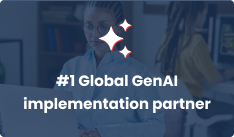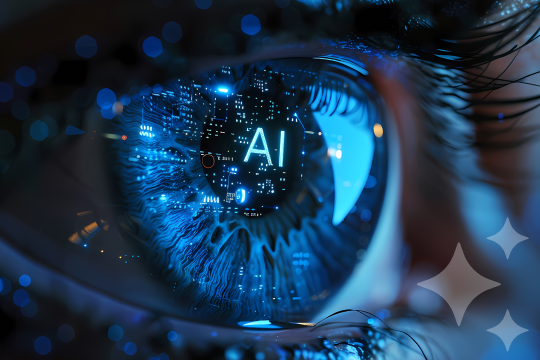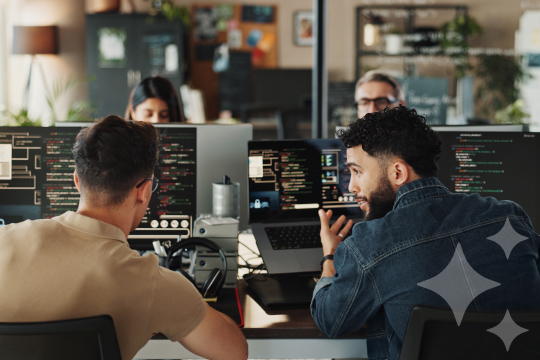Create the ultimate Employee Experience with ServiceNow
In a tight labor market and amidst strong competition, investing in an Employee Experience platform like ServiceNow can give you a real competitive edge. But are you new to this concept? Learn what the Employee Experience is, why it is important and what benefits ServiceNow provides as unified employee experience platform.
Quickly jump to:
- What is Employee Experience?
- Why is the Employee Experience important?
- 4 reasons to invest in digital Employee Experience
- How EX accelerates business transformation by driving new ways to work
- Must-have: the ServiceNow Employee Experience platform
- 3 trends that will shape the future of Employee Experience
- Using Agile design to create flow experiences for employees
- ServiceNow, the unified Employee Experience platform
What is Employee Experience?
Employee Experience is the employees’ perception about their journey through all of the touch points they have with an employer. There are multiple types and levels of touch points, and they can be both planned and unplanned. Examples of touch points related to key moments in the employee lifecycle are:
- First day at new job
- Promotion to a new position
- Ending/starting a new project
- Taking parental leave
But there are also smaller, maybe less obvious touch points. They are often hidden in everyday activities, like:
- Find information or a coworker
- Resolve an IT issue
- Book a meeting room
- Welcome a visitor
These are all moments that determine how an employee experiences the organization.
The components that make up these touch points can be categorized as Culture, Physical Workspace and Technology. These components are known to have the biggest impact on how employees feel about their jobs, coworkers and organization. All three components are needed to enable, empower and engage your employees.
Enabled, empowered & engaged employees
To sum it up, Employee Experience is all about enabling your people to have a great time at work. You design an experience that’s right for your employees and the work they do, whilst ensuring it also suits your organization, culture, purpose and values.
Why is the Employee Experience important?
Employee expectations of work are changing. It’s no longer enough to receive pay for a job well done. Employees look for purpose and meaning at work. They want to be motivated and engaged, and personal development is key. Employees are fast becoming workplace consumers now that the workplace is rapidly going digital and becoming hybrid.
Before the COVID-19 pandemic hit, the reasons for businesses to invest in the Employee Experience (EX) were driven by talent acquisition and productivity enhancements. Now, due to corona, we’ve experienced a sudden shift in the way we work, which created new and different business challenges. This made organizations realize that they need a long-term Employee Experience strategy to meet the new workplace challenges.
So now, creating an employee-centric workplace is on top of every strategic agenda. No wonder, because it can add great value to your company.
4 reasons to invest in digital Employee Experience
There is a growing body of evidence that demonstrates that Employee Experience positively impacts a range of business outcomes. For years, organizations have focused on the Customer Experience as the primary driver of business success, but in recent times the conversation has shifted. Employee Experience is in spotlight now that organizations start to see the value of investing in their people first.
- Boost employee retention
If you offer a great place to work, your employees are happy and don’t feel the need to leave your company. Not only does this save you a big chunk of costs—replacement costs can be up to an annual salary plus 50 days of work per employee (=resume review, interviews, onboarding and training!), but the impact on culture can be just as severe. So, a great employee experience helps retain employees and avoids the impact of repetitive disruption.Monitoring employee retention figures is key here. You’ll need to stay on top of why people leave, in which months, what job level, etc. This all which starts with gathering the right data through e.g. exit surveys. This data will help you understand the leave, so you can remove any obstacles that stand in the way of a great employee experience. - Increase workforce productivity and innovation
May researches have shown that low engagement leads to low productivity. We cannot deny that engaged employees are an organization’s most valuable asset. Fuelling engagement means providing employees with a working environment that allows them to operate at their best. This means supplying the right technology, fostering a positive culture and providing an environment that suits employee working styles. When you get these three elements right, the stats speak for themselves: employees work harder and innovate faster (IBM Work Trends 2016). - Attract better talent
Attracting talent is top priority for most organizations. There’s a global skills shortage affecting a cross-section of industries, which means employees can be demanding about where they’re willing to work. More than ever, organizations are competing against each other to attract the best talent and the battle is often won on Employee Experience. - Provide a better customer experience
When your employees are engaged in their work and happy with their jobs, customers notice this. Instead of half-hearted responses and minimal-effort approaches, employees that take pride in their work are willing to go the extra mile for your customers. Give to them, and they will give to you.
How EX accelerates business transformation by driving new ways to work
A compelling EX is good for your employees, but should contribute to the strategy, goals, priorities, issues, challenges or opportunities of your business too.
When done right, efforts to improve the EX will also help to achieve business goals. Inventing new ways of working and applying innovative technology has proven to be a strong driver for business transformation. It also reduces the costs incurred for business services that have little or no added value or are simply waste.
From a CxO perspective, Employee Experience can contribute to numerous business objectives and challenges, like:
- HR transformation
Optimize the employee journey with new HR technology and build a truly customer-centric HR organization - Managing a hybrid workplace
Support workers with workspace solutions that enable them to work anywhere, anytime - Future-proof IT Service Management
Improve your IT maturity - Innovative workforce solutions
Empower your employees to collaborate, communicate and share information more efficiently and effectively using digital capabilities
Ultimately, a great Employee Experience creates value. When you add up all benefits above—better talent, higher productivity, better customer service and contribution to your business goals—it’s not hard to see how investing in Employee Experience is a good idea. Because, the more effort you put into your employees, the more value they will give you in return!
Must-have: the ServiceNow Employee Experience platform
In reality, many employees struggle to execute their work. Take service desk and support agents. They have to engage with a multitude of applications, whilst the provided technology does not help them get their work done. There are simply too many systems, a variety of touch points and poor user experiences. This is typically characterized by lack of flow and a lot of frustrations. Recognize this? Read here how to improve service desk agent job satisfaction.
Most employee needs and employee journeys cross HR, IT, Facilities and other departments within an organization. For each need or journey, multiple systems are involved. What you don’t want is that your employees get confused by the multitude of systems. Especially now, with hybrid working becoming the norm, and employees who love the flexibility and ability to work the way they want.
What is needed is a single point of contact. Most vendors claim their solution provides a single point of contact. But in reality, that’s usually a hoax. The only platform that truly offers a single point of contact is ServiceNow.
As a true Employee Experience platform, ServiceNow shields employees from complex and heterogeneous back-end systems and gives employees a single place to go for a wide range of services. It provides one digital engagement layer for all employees. When implemented well, an EX platform enables AI, nudges, and offers mobile apps and cognitive interfaces to make employees’ work lives more productive and engaging.
3 trends that will shape the future of Employee Experience
In the past centuries, the world of work has constantly evolved. The steady push of technology and the rise of the digital workplace have shaped not only how and where we work, but also the nature of the roles and skills required to work in a highly dynamic work culture.
The world of work continues to evolve, requiring business leaders to look for innovative solutions that will support workplaces and workforces of the future.
COVID-19 has definitely impacted the future of work. While some trends represent an acceleration of existing shifts, others are new impacts and have never been discussed. In some cases, COVID-19 has forced the pendulum of a long-observed pattern to another extreme, like remote working.
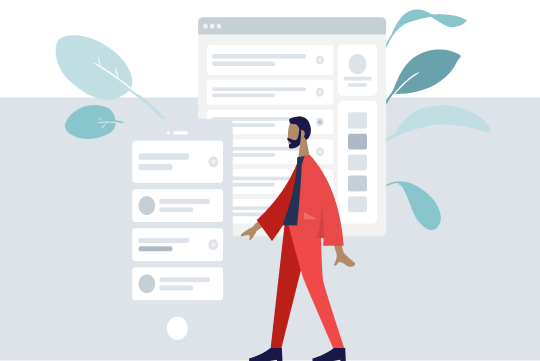
1. Steadily changing workforce
Managing the multigenerational workforce – Until recently, the prevailing culture of work was established by the baby boomer generation and was based upon their generational experiences. For the first time, five generations are at work. The challenge is to understand the changing generational differences in the modern workplace and the unique needs and expectations of a wide range of age groups. This creates an opportunity for organizations to focus their Employee Experience on new expectations arising out of the digital-first generation, and to mutually thrive through novel, yet attainable service delivery concepts.
Millennials revolutionize work culture – As millennials occupy a greater percentage of the active workforce, Employee Experience is becoming increasingly important. Millennials are known for their pursuit of purpose, which determines their longevity within an organization. This trend is relative to Employee Experience: it’s the fuel that drives individuals to accomplish their daily quotas and strive for the next step in their careers. That’s why organizations should strive to establish a work environment that values employee needs and wants.
Work life consumerization – As individuals, employees are increasingly accustomed to personalized experiences in their daily lives—from the spot-on recommendations from Coolblue and Netflix to the instant gratification of services like Just Eat Takeaway or the ease of avoiding traffic jams with Google Maps. In the workplace, that personalized consumer experience may end abruptly as employees are faced with a talent management culture that delivers the same experience to everyone, at each stage of the employee lifecycle. In order to deliver this personalized consumer experience, IT, HR and facilities must improve and innovate their services in the near future.
2. Flexibility in where and how we work
Heading towards a hybrid workplace – Most organizations are creating a hybrid workplace where office employees rotate in and out of an office configured for shared spaces. This model embraces the flexibility that most employees and some employers crave after working from home for months. On top of that, it requires a more sophisticated way to organize the work week and will transform the company culture, employee engagement, work execution and space usage.
Remote working is here to stay – Traditionally, it were employees who were driving trends towards distributed teams, with many organizations being hesitant to embrace remote work. After several months of remote teams adapting and learning to work in this new way, it has become clear that even when things get back to normal, we can expect this recent shift towards distributed workforces to remain. For the distributed workforce to thrive, they must be able to collaborate, communicate, and engage with each other and with all operational systems as effectively as possible in a centralized physical workspace.
New Agile ways of working and employment models – Over the past decade, the group of gig workers, remote workers, and specialized consultants has grown substantially. That’s because new employment models and agile ways of working are rapidly gaining ground.
Instead of hiring employees with generalist skills to be physically and permanently located in a central office, the growing trend is to form dynamic teams based upon task-oriented skills. These teams work within a much less centralized and hierarchical structure. Employees may work remotely, on a permanent basis or only occasionally. They may live near their central offices and still come in for meetings, or there may be many kilometers and time zones between them. What these distributed workforces all share is the need to be connected in real time, to each other and to all the corporate resources and tools that are available to on-premise workers.
3. Adopting new technology and simplifying work
From service delivery to integrated EX – Since technology is such a central part of the overall work experience, it is more crucial than ever to use technology that radically improves the Employee Experience. Organizations are continually expanding their application portfolio while trying to find out how to use the applications and get them adopted by employees.
The proliferation of new technologies has made work complex for most employees. The growing number of systems used by employees to do their daily work is living proof of that, along with the limited impact of digital workplace tools on productivity.
In the ultimate EX, information is available as needed, people are efficiently guided to the right systems and departments, and employees get relevant help. The problem is that there is no single platform to help address all these challenges. That’s why the so-called EX platforms are emerging. This kind of platform has its roots in case management and the employee portal market and shields employees from complex and heterogeneous back-end systems. An Employee Experience platform like ServiceNow gives employees a single place to go to for a wide range of services.
Next-level automation – New innovative technologies offer opportunities to further improve service delivery. By automating tasks and minimizing errors, artificial intelligence can take over mundane and repetitive tasks across the business. Employees can then focus on problem-solving and more creative and interesting tasks. AI-augmented systems can analyze and interpret big data and widely disparate data sets, delivering highly accurate and actionable insights. This supports not only employee wellness initiatives, but greater innovation and more confident decision-making in all areas of the business.
Role of IT – Infrastructure and operations activities that support the digital workplace will be increasingly oriented towards boosting workforce digital dexterity. Employees will leverage peer-to-peer IT support, crowdsource from the IT community for solutions and even develop their own applications with low code/no code. Understanding the needs and motivations of employees (design thinking) will become a new way for the IT organization to develop its services. Best practices will empower the workforce to navigate IT services through employee-centric service catalogs and community platforms.
Using Agile design to create flow experiences for employees
The above trends are indispensable and underline the importance of a great Employee Experience for organizations in terms of added value for both the business and employee. A meaningful Employee Experience goes well beyond making employees happy or simply repackaging HR activities. It is intentionally designing an experience that’s right for your employees and the work they do, whilst ensuring it also suits your organization, culture, purpose and values.
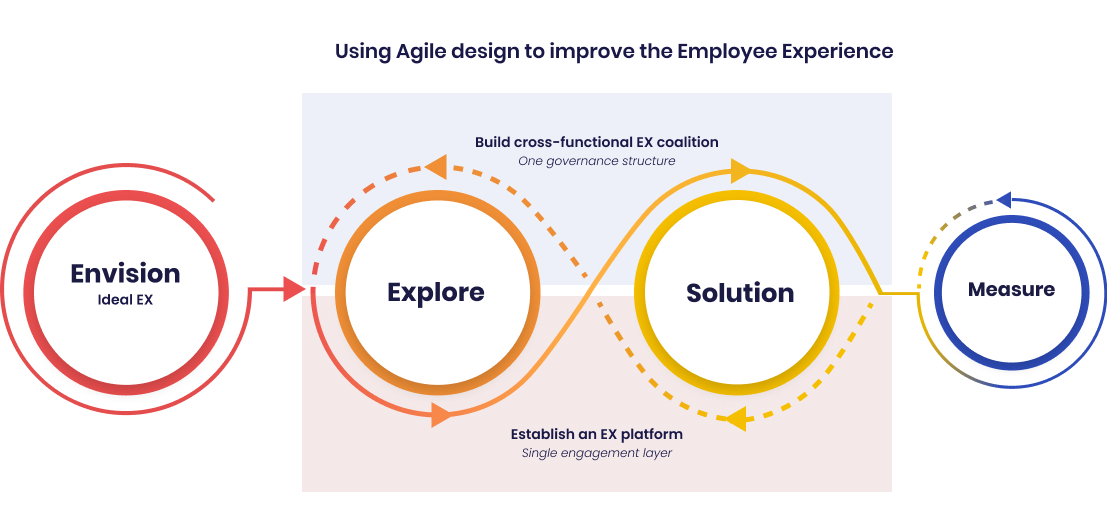
Define your (ServiceNow) Employee Experience in 5 steps
The starting point of your EX journey is to find out what your EX should be to meet the need of your people, the work and the organization. A great way to do that is drawing up your Employee Value Proposition (EVP).
Based on your EVP, you envision what the overall experience you are trying to achieve. Also establish where your current EX is at and what’s lacking. From there, you can prioritize where to focus design efforts and drive the Employee Experience value chain using Agile design to create experiences.
- Envision your ideal Employee Experience – Align EX with your business strategy, set priorities and define a roadmap for success
- Use an Agile design approach when building experiences – Think big, act small and organize for continuous improvement
- Enable integrated Employee Experiences – Implement an overarching and unified EX platform (like ServiceNow)
- Measure for actionable insights – Tune into the voice of your employee to drive continuous improvement
- Join forces and get your Business Services act together – Build a cross-functional EX coalition
ServiceNow, the unified Employee Experience platform
For a journey intended to connect people, functions and systems to drive innovation, increase business agility and unlock productivity, a cross-functional collaboration and state-of-the-art EX platform is a must-have. The ServiceNow Employee Experience platform provides middleware connectivity, process management, case management and knowledge management. These enable you to offer employees an one-stop-shop to manage their work-related tasks, HR requirements and job transitions. It is accessible from an employees’ device, intelligent, context-sensitive and workflow-based. As such, ServiceNow enables you to bridge the gap between different systems, disparate business services delivery and offers the ideal flow experience employees need to give their best at work.
Measuring for actionable insights is the fifth cornerstone of our EX approach. It means that you should frequently ask your employees about their experiences, capture EX data and listen to them to be able to design workforce solutions that work. Establish a measuring approach that’s flexible and provides insights on different levels—from measuring a single touch point, to overall experience and business value.
Tip: One of the tools you could use for measuring experiences is Giarte and their Experience Level Agreement framework.

Ready to make work flow with ServiceNow?
We can’t wait to help! Fill out the form below, and we will get you in touch with the right ServiceNow expert.

